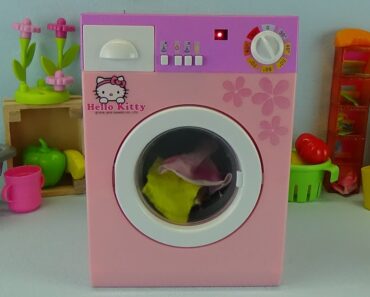image: iStock
After a busy and tiring day filled with activities, nap time gives your child the chance to press pause and let their active bodies rest and rejuvenate. Besides, nap time also gives you that peaceful hour or two when you can fold laundry, take a warm shower, read a book, or even catch up on your favorite TV show.
However, your little one will get over nap time eventually. Read on if the question, “When do kids stop napping?” is on your mind, and you want to learn more about children’s nap time.
When Do Kids Stop Napping?
Parents often believe that children sleep better at night without an afternoon nap; this is not entirely true. Without a nap, children often become irritable, and their moods can worsen. Sometimes, they might also become overactive before bedtime if they fail to get their daily dose of nap time.
Children’s nap time patterns can vary. Some give up naps earlier, others are fine with catnaps, and some need long naps.
Several factors, such as their age, medical conditions, activity level, and nighttime sleep determine and influence whether your child still needs an afternoon siesta (1).
Here’s a rough estimate of the hours of nap time children need depending on their age (1).
- Babies aged zero to six months need 2–3 daytime naps lasting between 30 minutes and two hours each day.
- Babies aged six months to one year need two naps a day, which may last for about 20 minutes for some and a few hours for others.
- Toddlers (1–3 years) need 1–3 hours of naptime.
- Most preschoolers (3–5 years) may give up naps altogether, while others might nap for an hour or two.
- A few school-aged children (5–12 years) might continue to take a few naps, especially if they have not slept well at night.
Although most children stop napping once they enter preschool, every child is different, and there are no hard or fast rules regarding when a child drops their nap. Your older child would have stopped sooner than your little one, or your friend’s child might continue to nap at the age of seven.
So, the answer to “When do kids stop napping?” is when they’re ready — ideally, when they no longer need a nap to feel energized.
Importance Of Nap Time
Nap time is essential for your child’s physical and mental development. Here are a few proven benefits of nap time for children (2) (3) (4).
1. Helps children learn
Nap time provides the much-needed downtime for children and helps with their growth and physical and mental development. Additionally, it also helps them remain alert during the day and pay attention in class and learn better. Daytime nap is also associated with better memory retention and development in children.
2. Helps them stay fit
Children who don’t get enough or irregular sleep are often tired throughout the day. Lack of sleep also causes children to crave food, leading to obesity. Especially for younger children, sleep is necessary for muscle growth and repair. When children are tired, they lack the energy to be active.
3. More nap time means better mood
Sleep has a direct effect on mood and makes you happier. Days with no naps can be full of tears and tantrums. Lack of sleep makes children more frustrated, anxious, and less joyful. A study conducted on 3,000 children in China by researchers at the University of Pennsylvania reveals that children who nap during the day are happier than those who don’t. The study suggests that daytime naps also lead to better academic performance (5).
Signs Your Child Is Ready To Stop Napping
As there’s no specific age when a child stops nap time, as parents, you need to pay attention to the signs your child shows. At first glance, your child might look highly active, so it’s hard to gauge and know for sure if they’re sleepy or ready to give up on nap time.
To determine if your child is ready to give up daytime naps, monitor their behavior for a few weeks. Your child’s actions will speak loud and clear when they’re ready to stop napping. Nonetheless, here are a few common signs.
1. Stable mood
If your child displays a consistent mood from the time they wake up until bedtime, sometimes even on busy days, it typically means they’re ready to give up nap time. Of course, there would be the odd days when they might act cranky. Barring those few days, if they’re usually stable with no meltdowns, it suggests they no longer need their nap time.
2. Trouble falling asleep during nap time
Unless extremely tired, children rarely fall asleep the moment you put them to bed. Sometimes, they might act restless and fidgety before napping, but if they eventually soundly fall asleep, they may not be ready to give up nap time. However, if they show no signs of sleepiness, it’s an indication that they no longer need that extra sleep.
3. Napping hampers the bedtime routine
Napping during the day can make them less sleepy during the night. If your child takes longer to fall asleep, finds it hard to sleep, postpones their sleep, or wakes up earlier than usual, it may mean that the end of nap time is near.
4. They’re energetic throughout the day
When your child skips napping yet shows no signs of crankiness and is generally energetic, it’s a solid indicator that they’re ready to make the transition away from napping.
Tips To Help Your Child Transition From Nap Time To Quiet Time
Here are a few easy-breezy tips to help your child transition from nap time to quiet time.
1. Adjust their bedtime
Initially, when you wean your child off from nap time, they might get tired sooner. So, you can adjust their bedtime to accommodate the lack of nap time.
2. Offer some quiet downtime
If your child remains wide awake during their nap time, do not force them to sleep. Keep in mind that even though your child isn’t napping, they need a break. So, you can offer some quiet downtime to help them relax and recharge. They can read a book, play with toys, or listen to music.
3. Commit to a nap-free routine and stick to it
When you’re helping your child move away from nap time, it’s essential you stick to a consistent routine to help their bodies adjust. The more you change their routine, the more their internal clock will be affected.
4. Keep them occupied with activities
Activities help keep your child occupied while also giving them some rest. This quiet time is important. The activities during this time can be something that engages them while also imparting some learning. Here are some easy, quiet-time activities:
- Pretend play with dolls or toys that they can use to snuggle or read stories to.
- Build different things using blocks.
- Solve simple puzzles.
- Read books.
5. Offer praise after each quiet time
Every time your child completes quiet time, offer them praise for being good. Especially in the beginning, they need constant encouragement. When your child sees their success, they’ll attempt to stick to it.
6. Start slow
Don’t expect your child to get used to no nap time instantly. The transition takes time and varies from child to child. Initially, you can start slowly. Once they’re used to it, you can decide how long you want quiet time to last.
Nap time is vital for children. While transitioning children away from nap time is not easy for most parents, the tips and tricks given in this article should help you find some success. Remember, it takes patience, time, and effort. Keep at it, and don’t give up. Good luck, Mama!
References:
Recommended Articles
• How To Teach Kids To Tie Shoe Laces?
• Simple Activities To Build Self-Esteem In Children
• Fascinating And Fun Ways To Motivate Your Child
• How To Build Confidence In Kids: Tips And Activities You Can Try


































